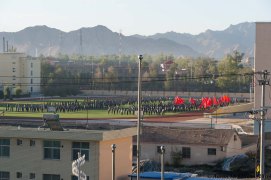On Sunday (that’s right, Sunday), Eryuan Liang and I took the morning high-speed train 1200 km in under 4 hours, and on time to the minute, from Beijing to Nanjing to give afternoon seminars at Nanjing Forestry University (established 1902). I was on tap to talk about forest foundation species, while Eryuan was set to talk about dresses (actually alpine treelines, but without any sense or irony, the “p” was lost in translation). Sundays are great days to give seminars; attendance is always good because the students don’t have classes and the faculty don’t have meetings. The seminars were fine, but the banquet afterwards …
Dispatches from Abroad: The unBalanced ecoLOGist Noshes in Nanjing
























